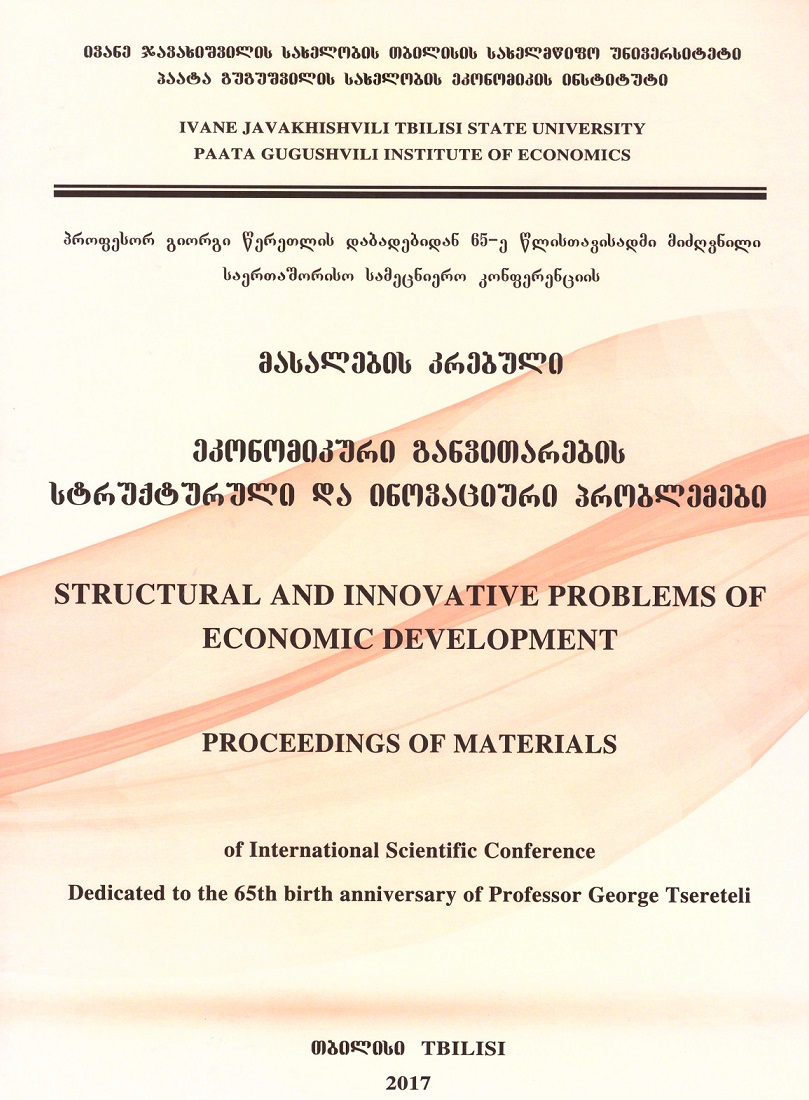
Ivane Javakhishvili Tbilisi State University
Paata Gugushvili Institute of Economics International Scientific

GEO-ECONOMICS AS A BRIDGE BETWEEN CLASSICAL AND ALTERNATIVEECONOMIC THEORIES IN THE CONTEXT OF GLOBAL TRANSFORMATIONS
Summary
The contemporary global economy is characterized by dynamics that classical economic theories alone cannot sufficiently explain. While Adam Smith’s “invisible hand” (1776) and David Ricardo’s theory of comparative advantage (1817) established fundamental principles of markets and international trade, the 21st century introduces new complexities such as globalization, geopolitical tensions, technological disruption, and widening inequality (Stiglitz, 2002; Rodrik, 2011). These developments necessitate a broader, interdisciplinary framework.
This paper argues that geo-economics serves as a conceptual “bridge” that connects the logic of classical market models with alternative approaches—such as institutionalism, behavioral economics, development theories, and critical political economy. The analysis proceeds in three stages: (1) revisiting classical and neoclassical models, (2) highlighting the limitations of their assumptions, and (3) integrating alternative schools of thought with geo-economic perspectives.
The study begins with the classical foundations, emphasizing Smith’s idea of market self-regulation and Ricardo’s comparative advantage as key rationales for free trade. Marshall’s neoclassical synthesis further developed the supply-demand framework and introduced elasticity. However, real-world crises, most notably the Great Depression, exposed the limits of self-regulating markets. Keynes (1936) demonstrated the need for state intervention, while Friedman’s monetarist critique (1968) reignited debates over the balance between markets and governments.
Alternative theories address the gaps left by classical assumptions. Institutionalism (North, 1990) highlights the role of norms, rules, and governance; behavioral economics (Kahneman & Tversky, 1979) incorporates psychological biases and bounded rationality; development theories (Sen, 1999) redefine progress through capabilities and freedoms; and critical political economy (Harvey, 2005) underscores power relations and inequality in capitalism.
Geo-economics, introduced by Luttwak (1990) and later developed by Khanna (2016), merges these perspectives by situating economic processes within global power structures. It emphasizes how states employ economic instruments—trade, investment, infrastructure, and technology—as strategic tools in global competition.
To demonstrate this integrative capacity, the paper examines three empirical cases: European Union – The EU illustrates geo-economics through integration, energy diversification, and the European Green Deal. Its pursuit of digital sovereignty highlights the intersection of classical market integration with institutional and technological dimensions. Caucasus Region – Georgia’s role as a transit corridor underscores how market logic (transport, energy corridors) intertwines with institutional weaknesses and geopolitical risks, making geo-economic analysis indispensable. China’s Belt and Road Initiative (BRI) – The BRI embodies classical principles of trade expansion yet also raises institutional, financial, and political concerns. Its digital dimension further illustrates the strategic nature of technology in global competition.
The study concludes that no single economic theory provides a complete framework for understanding today’s challenges. Instead, geo-economics offers an integrative lens: it retains the analytical clarity of classical models while incorporating the socio-political and technological insights of alternative approaches.
Key contribution: By conceptualizing geo-economics as a bridge, this paper expands the theoretical debate and demonstrates its practical application across Europe, the Caucasus, and Asia. The findings suggest that 21st century policy must embrace complexity—balancing market efficiency with institutional resilience, technological adaptation, and social equity.
